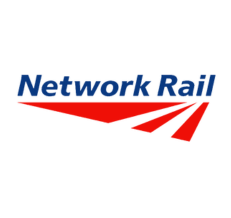
CCQ are list on the technology service providers collaborators for Network Rail’s Infrastructure Monitoring program which is the foundation on which many engineering decisions sit within Network Rail.
Working in partnership with an engineering consultancy, CCQ engaged with Network Rail to understand the complexity and variables of asset management across the network.
CCQ further developed an understanding of the interrelation of third party assets and civil engineering scenarios.
Keeping Britain’s railways moving and on time requires the management and maintenance of a vast amount of infrastructure. Tracks, bridges, and signals through 20 of the UK’s largest stations are all required to work together, avoiding downtime or failure.
Network Rail came to CCQ amid a significant programme of work to improve its asset management systems and capability. The challenge was to deliver Whole Life Cycle Costing (WLCC) analysis across their top 30 asset classes with the most impact on safety, train performance and expenditure.
Assets management across UK railways presents unique complexities. Many Victorian bridges and other infrastructure from early in the railways’ inception remain in use. At the same time, numerous stakeholders interoperate to deliver end customer freight and passenger services.
As critical infrastructure, the overall objective of this piece of work was to optimise the ongoing reliability of assets across the network.
CCQ leveraged scenarios to model and simulate optimal ways to inspect, maintain and improve railway infrastructure, including:
- Maintenance and renewal interventions (time of intervention and cost)
- Operational costs
- Asset outputs
- Age
- Cumulative duty
- Remaining life
- Condition
- Asset performance/service risk
- Present Value of costs and risks
- C#
- Visual Basic for Applications (VBA)
- Excel
- MS Access
- SQL
- Consultancy
- Algorithm Research
- Implementation
- Testing
- Execution
CCQ delivered a nationwide WLCC solution designed to address multiple system-wide complexities. Bringing our engineering and sector experience to bear, we overcame the inherent challenges of a wide range of asset types, ages and often a lack of existing data.
Our modelling solution significantly increased Network Rail’s asset management efficiency and maturity. The result delivered to Network Rail ultimately resulted in safer railways.
We want to hear your questions, your ambitions and understand the requirements of technology to support the people within your organisation. Schedule a no commitment short introductory call.

